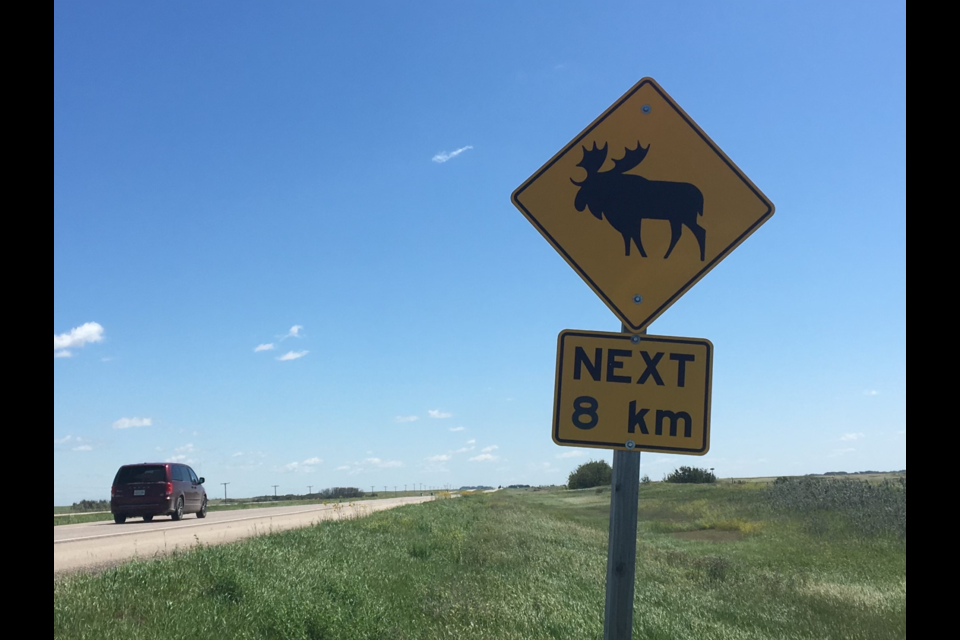SASKATCHEWAN — Stories of collisions with moose on Saskatchewan highways seem to be on the rise. SGI has confirmed moose collisions were in fact up a bit in October of 2022, with no reason given as to why this may be happening.
The graphic shows a detailed picture of wildlife collisions in the province. Keep in mind, these numbers only represent collisions when there was a claim through SGI, so there were potentially other collisions that were unreported.
“Based on our data from 2018-21, September through Dececember show the highest instances of collisions with moose,” according to SGI.
“Because moose are so large, collisions involving a moose cause much more damage than a deer or smaller animal.”
SGI adds, “While wildlife can be encountered on Saskatchewan roads any day of the year and any time of the day, during May and June animals are drawn to ditches for road salt and to escape biting insects. They are also especially active in the late fall and early winter during mating season and migration. The peak times for collisions are dawn and dusk.”
SGI offers strategies for avoiding collisions
• Sometimes encountering animals is unavoidable, however there are some strategies for decreasing the risk and damage caused by animal collisions. Slow down. Yellow wildlife warning signs indicate areas of high risk. No matter the season or time of day, it’s important to watch for signs of wildlife and reduce speed accordingly. Slowing down reduces the distance required to stop and decreases the force of impact in the event of a collision.
Stay alert. It's important to constantly scan the road from shoulder to shoulder. Being alert is still your best defence against a collision. When you see an animal at the side of the road, slow down and pass by slowly. For night driving, look for the glowing eyes of animals and use your high beams whenever possible.
Sometimes collisions with wildlife are unavoidable even if you take every precaution and remain alert at the wheel. In these circumstances, try to remain calm.
If a collision occurs, SGI suggests:
• Aim your vehicle at the spot where the animal came from, not where it's going.
• Try for a glancing blow rather than a head-on encounter and let up on the brake just before you collide. This causes the front of the vehicle to rise slightly and reduces the chances of the animal going through the windshield.
• Hitting an animal can be an extremely traumatic experience, especially when it’s a very large animal like a moose. If possible, move to the shoulder and turn hazard lights on. Take a moment to regain your composure and then assess the damage to your vehicle.
• Do not approach the animal, especially if it appears to be wounded. Injured animals can be extremely dangerous.
• Call the police or your local RCMP detachment if there are human injuries or significant damage to your vehicle. If the damage is less severe, you may continue driving and follow regular SGI claims reporting procedures.
Read more on animal collisions at https://www.sgi.sk.ca/wildlife-collisions.




